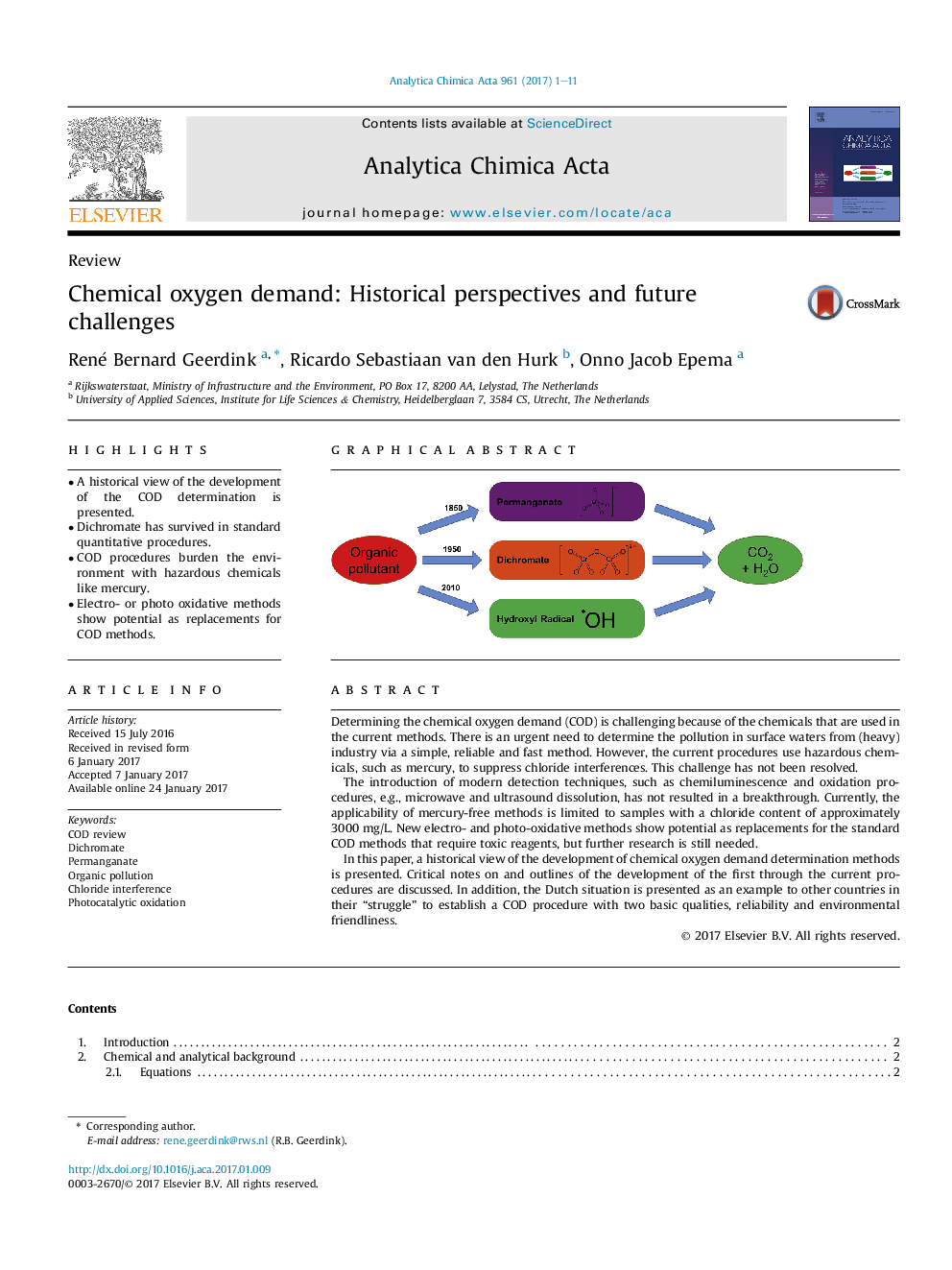| Article ID | Journal | Published Year | Pages | File Type |
|---|---|---|---|---|
| 5130980 | Analytica Chimica Acta | 2017 | 11 Pages |
â¢A historical view of the development of the COD determination is presented.â¢Dichromate has survived in standard quantitative procedures.â¢COD procedures burden the environment with hazardous chemicals like mercury.â¢Electro- or photo oxidative methods show potential as replacements for COD methods.
Determining the chemical oxygen demand (COD) is challenging because of the chemicals that are used in the current methods. There is an urgent need to determine the pollution in surface waters from (heavy) industry via a simple, reliable and fast method. However, the current procedures use hazardous chemicals, such as mercury, to suppress chloride interferences. This challenge has not been resolved.The introduction of modern detection techniques, such as chemiluminescence and oxidation procedures, e.g., microwave and ultrasound dissolution, has not resulted in a breakthrough. Currently, the applicability of mercury-free methods is limited to samples with a chloride content of approximately 3000Â mg/L. New electro- and photo-oxidative methods show potential as replacements for the standard COD methods that require toxic reagents, but further research is still needed.In this paper, a historical view of the development of chemical oxygen demand determination methods is presented. Critical notes on and outlines of the development of the first through the current procedures are discussed. In addition, the Dutch situation is presented as an example to other countries in their “struggle” to establish a COD procedure with two basic qualities, reliability and environmental friendliness.
Graphical abstractDownload high-res image (185KB)Download full-size image
